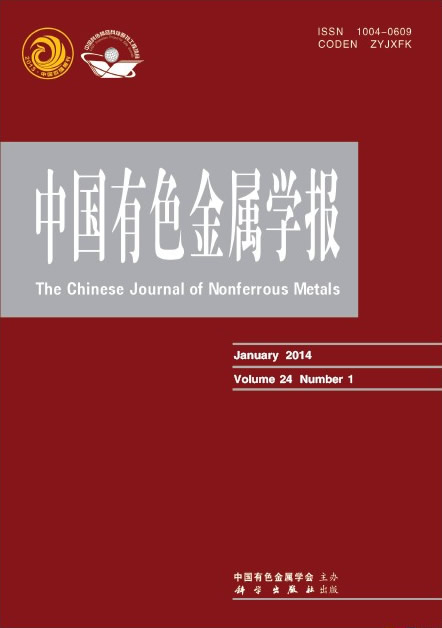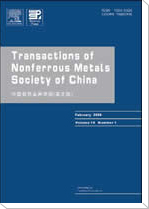中国有色金属学报(英文版)
Transactions of Nonferrous Metals Society of China
| Vol. 26 No. 3 March 2016 |
(1. Materials Synthesis and Characterization Laboratory, Institute of Advanced Technology,
Universiti Putra Malaysia, 43400 UPM Serdang, Selangor, Malaysia;
2. Department of Physics, Faculty of Science, Universiti Putra Malaysia, 43400 UPM Serdang, Selangor, Malaysia;
3. Schools of Applied Physics, Faculty of Science and Technology, University Kebangsaan Malaysia,
43600 UKM Bangi, Selangor, Malaysia)
Abstract:Corrosion behavior of friction stir lap welded AA6061-T6 aluminum alloy was investigated by immersion tests in sodium chloride + hydrogen peroxide solution. Electrochemical measurement by cyclic potentiodynamic polarization, scanning electron microscopy, and energy dispersive spectroscopy were employed to characterize corrosion morphology and to realize corrosion mechanism of weld regions as opposed to the parent alloy. The microstructure and shear strength of welded joint were fully investigated. The results indicate that, compared with the parent alloy, the weld regions are susceptible to intergranular and pitting attacks in the test solution during immersion time. The obtained results of lap shear testing disclose that tensile shear strength of the welds is 128 MPa which is more than 60% of the strength of parent alloy in lap shear testing. Electrochemical results show that the protection potentials of the WNZ and HAZ regions are more negative than the pitting potential. This means that the WNZ and HAZ regions do not show more tendencies to pitting corrosion. Corrosion resistance of parent alloy is higher than that for the weldments, and the lowest corrosion resistance is related to the heat affected zone. The pitting attacks originate from the edge of intermetallic particles as the cathode compared with the Al matrix due to their high self-corrosion potential. It is supposed that by increasing intermetallic particle distributed throughout the matrix of weld regions, the galvanic corrosion couples are increased, and hence decrease the corrosion resistance of weld regions.
Key words: friction stir welding; lap joints; AA6061 alloy; pitting corrosion; welding process; intermetallic particles


